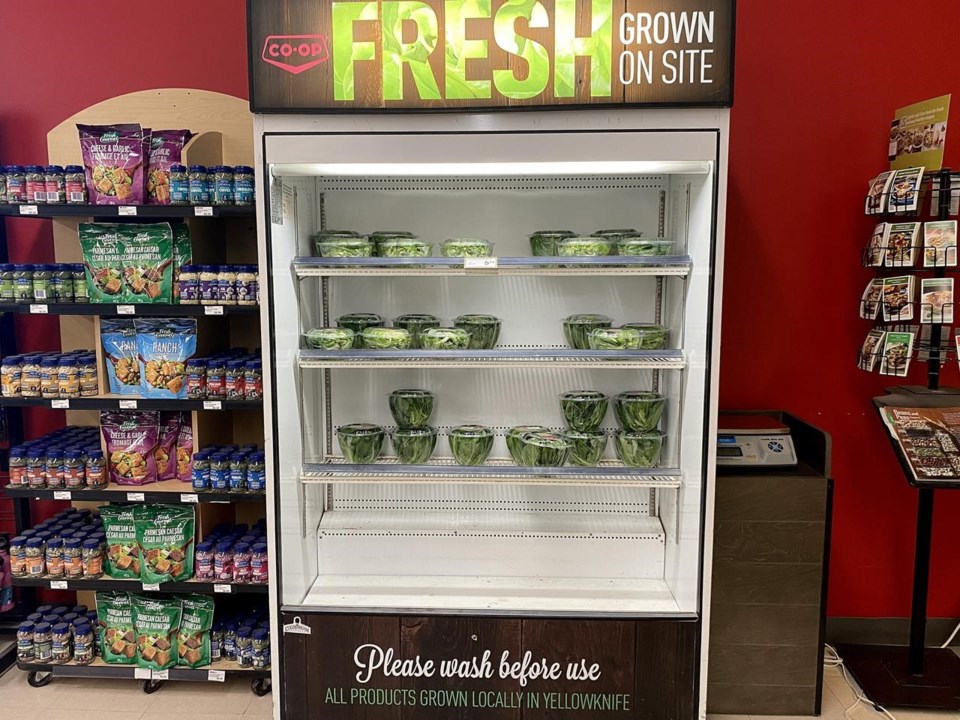INUVIK, N.W.T. — Greenhouses are becoming more popular in northern communities as a way to supplement available groceries and improve food security .
Some involve hydroponics, a higher-tech way of growing that doesn’t use soil. For example, the Inuvik Community Greenhouse has a hydroponic trailer parked out front, holding around 2,000 spaces for leafy greens and herbs grown year-round.
Co-ordinator Adi Scott said the produce supports the greenhouse’s weekly veggie box program with additional goods going to the food bank.
About a two-hour Canadian North flight away from the Inuvik greenhouse, just behind the Yellowknife Co-op, greens and herbs are being grown in a converted sea can.
The hydroponic greenhouse, which opened in February 2019, is fully automated, producing between 200 and 300 packages a week.
“The flavour degrades so quickly in perishable foods like leafy greens that having something that is available for sale within hours of being harvested is a totally different product than something that’s sat on a truck for two days to get up here,” said Jeff Kincaid, business development manager at the Co-op.
The Co-op’s greenhouse was manufactured by Growcer, a modular farming company that works with businesses, communities and schools to increase the availability of local produce across Canada.
Corey Ellis, co-founder and chief executive officer, recalls seeing the price of food on the shelves in Iqaluit during a University of Ottawa student club trip to the Nunavut capital.
“That was kind of the light bulb moment,” he said.
Ellis said Growcer has since installed around 75 vertical farms across the country and many projects are focused on capacity-building and training.
Some experts, however, are wary of high-tech growing as a solution for remote communities. Andrew Spring, an assistant professor at Wilfrid Laurier University and a Canada Research Chair in northern sustainable food systems, said it can be difficult to fix them if the parts have to come from far away.
Besides, hydroponics is generally used to grow greens, and “salad is not the answer to food insecurity,” he said.
What’s really needed from a food security standpoint are, broadly speaking, “things that go in stew,” he said -- hearty produce that can be kept for longer, and that can go with traditional fish or game.
Kincaid, with the Co-op in Yellowknife, said while the hydroponically grown greens don’t replace food coming from the South, “it is a nice little bonus.”
This report by The Canadian Press was first published July 21, 2023.
-- with files from Rosa Saba in Toronto
Emily Blake, The Canadian Press



